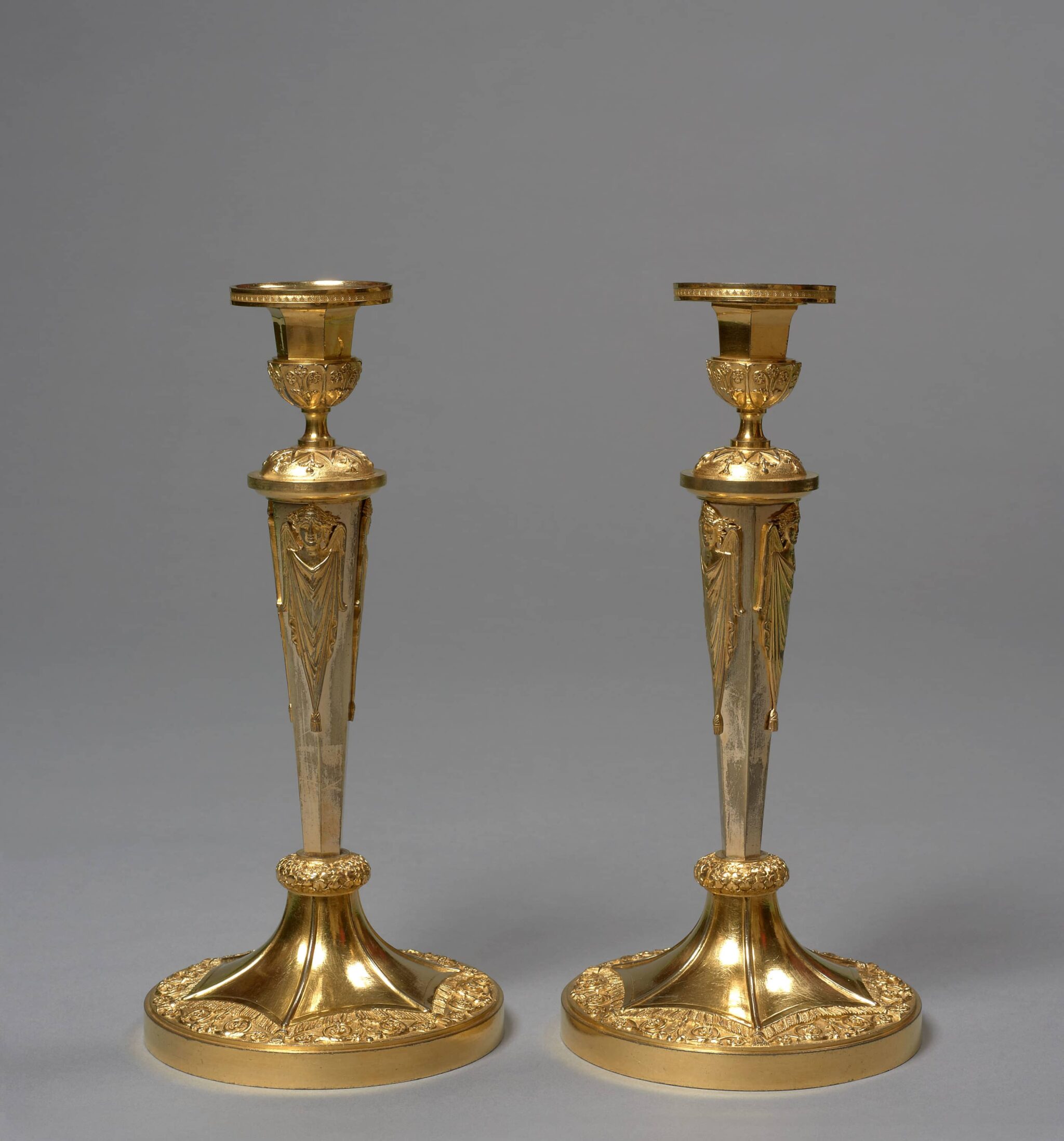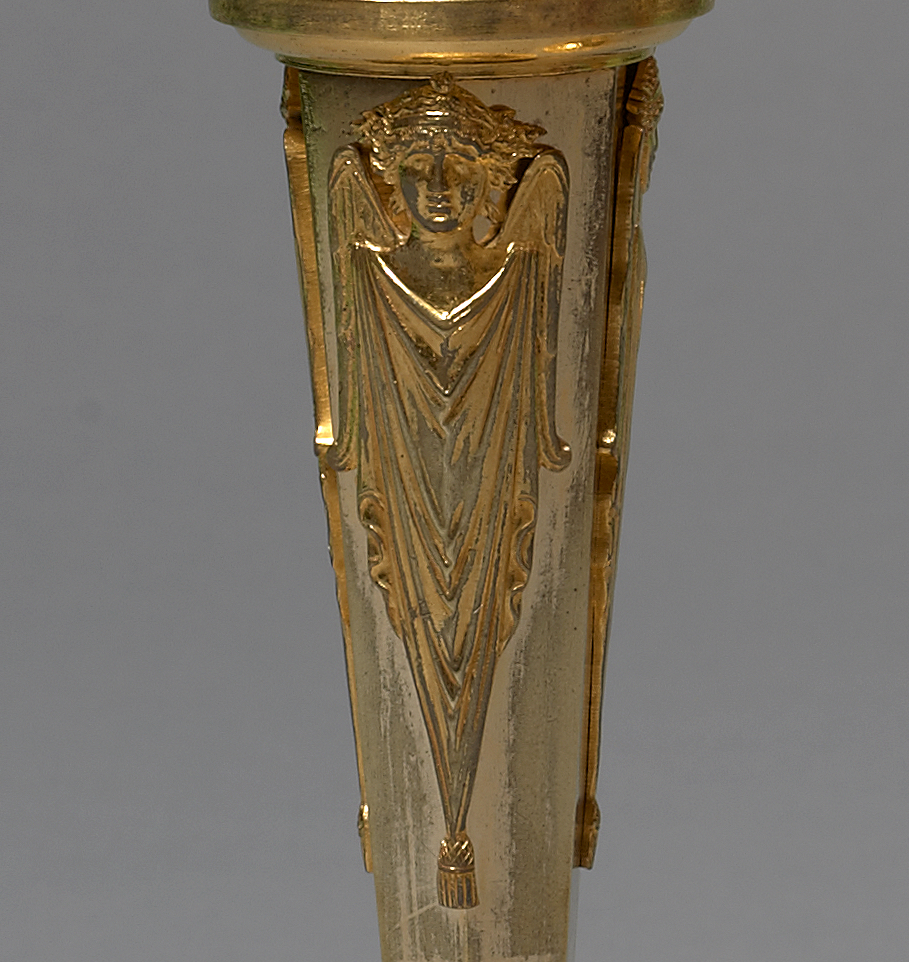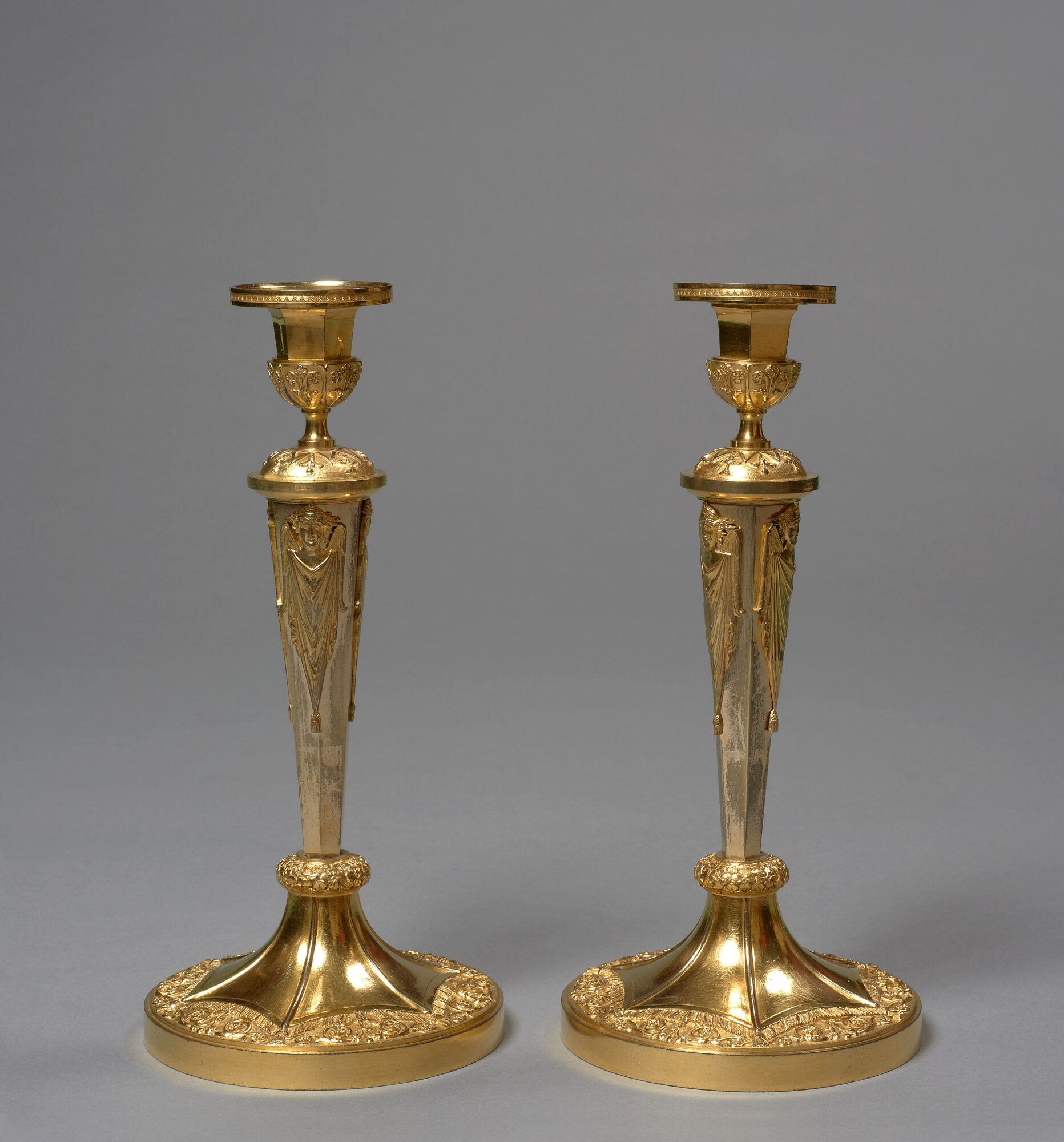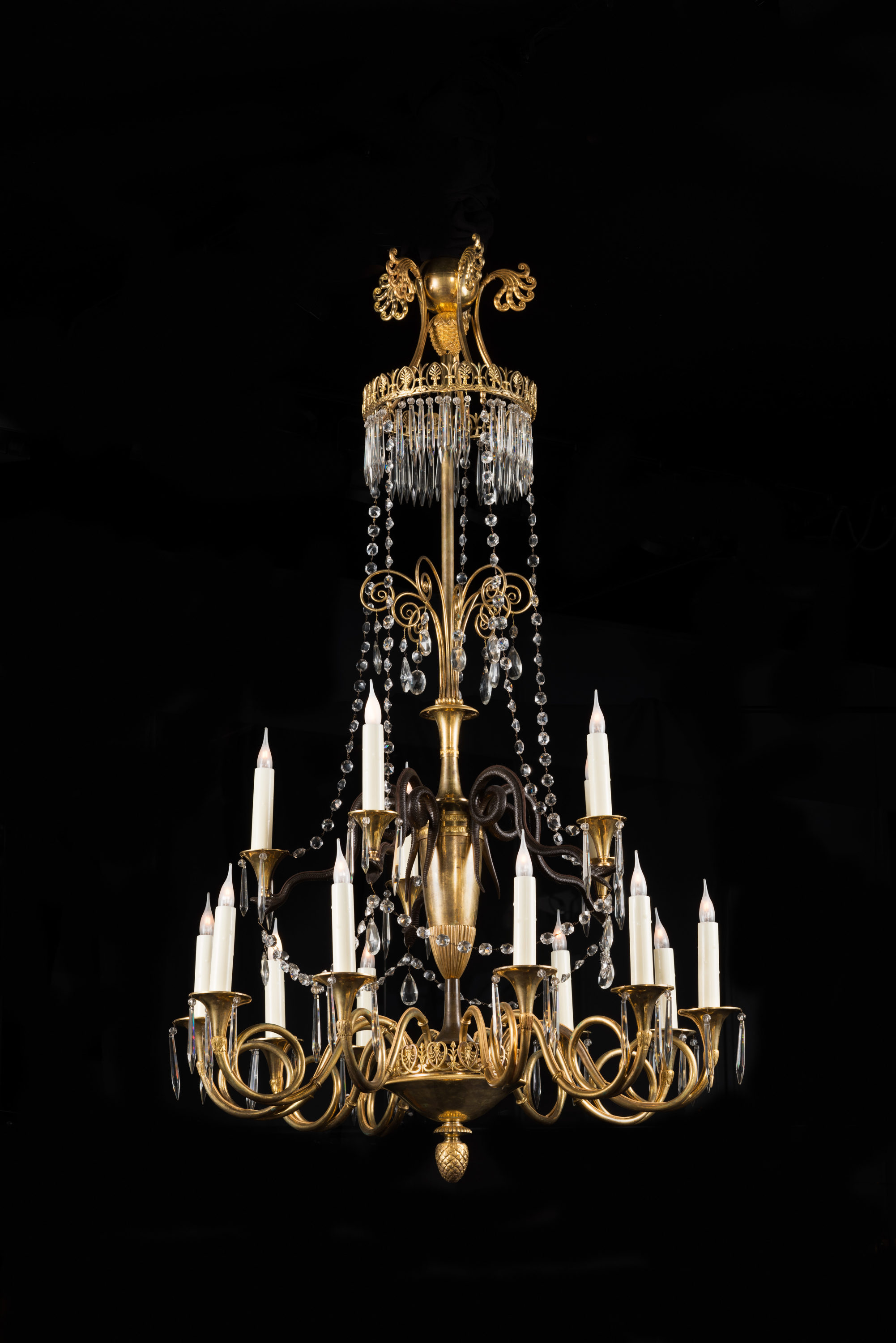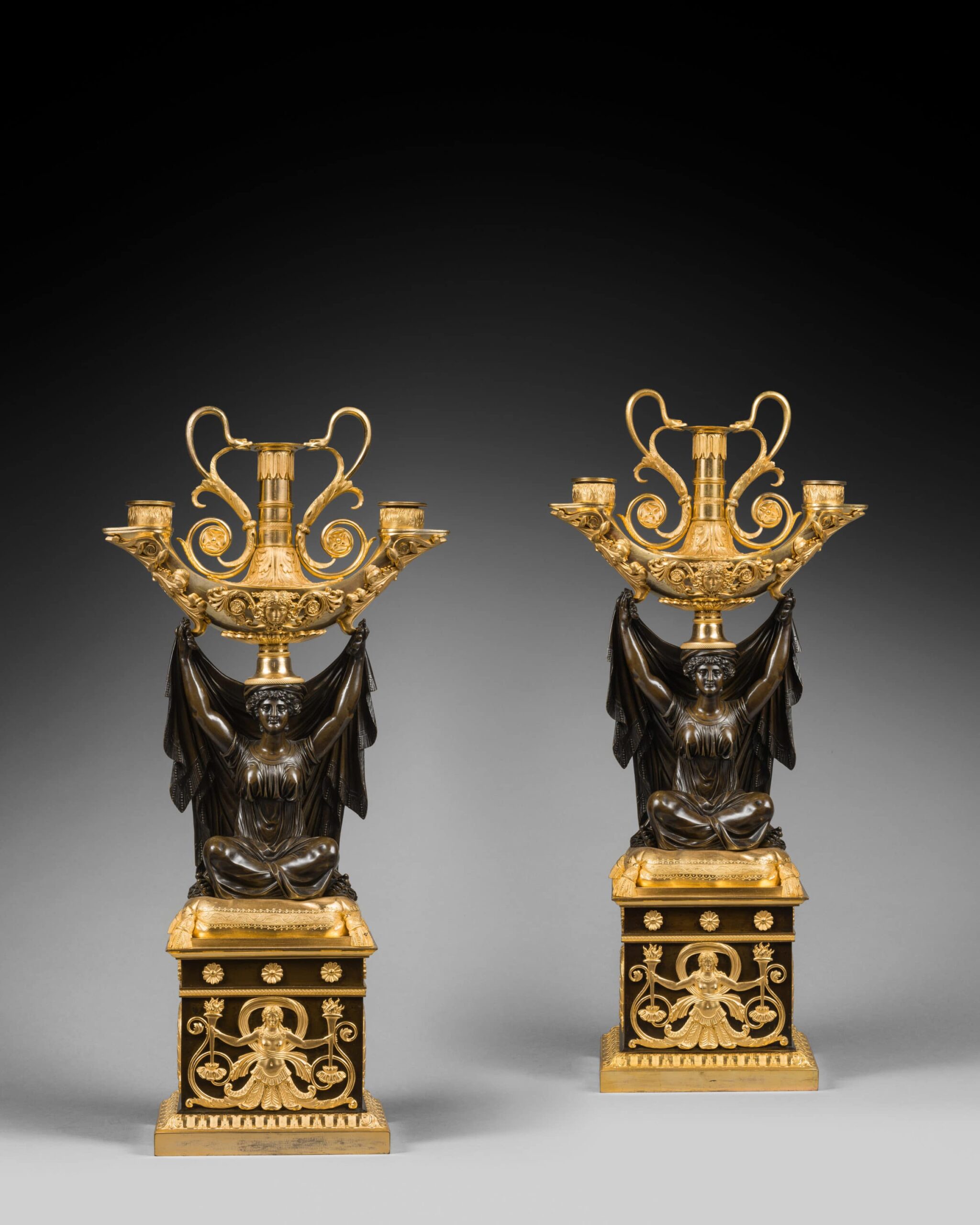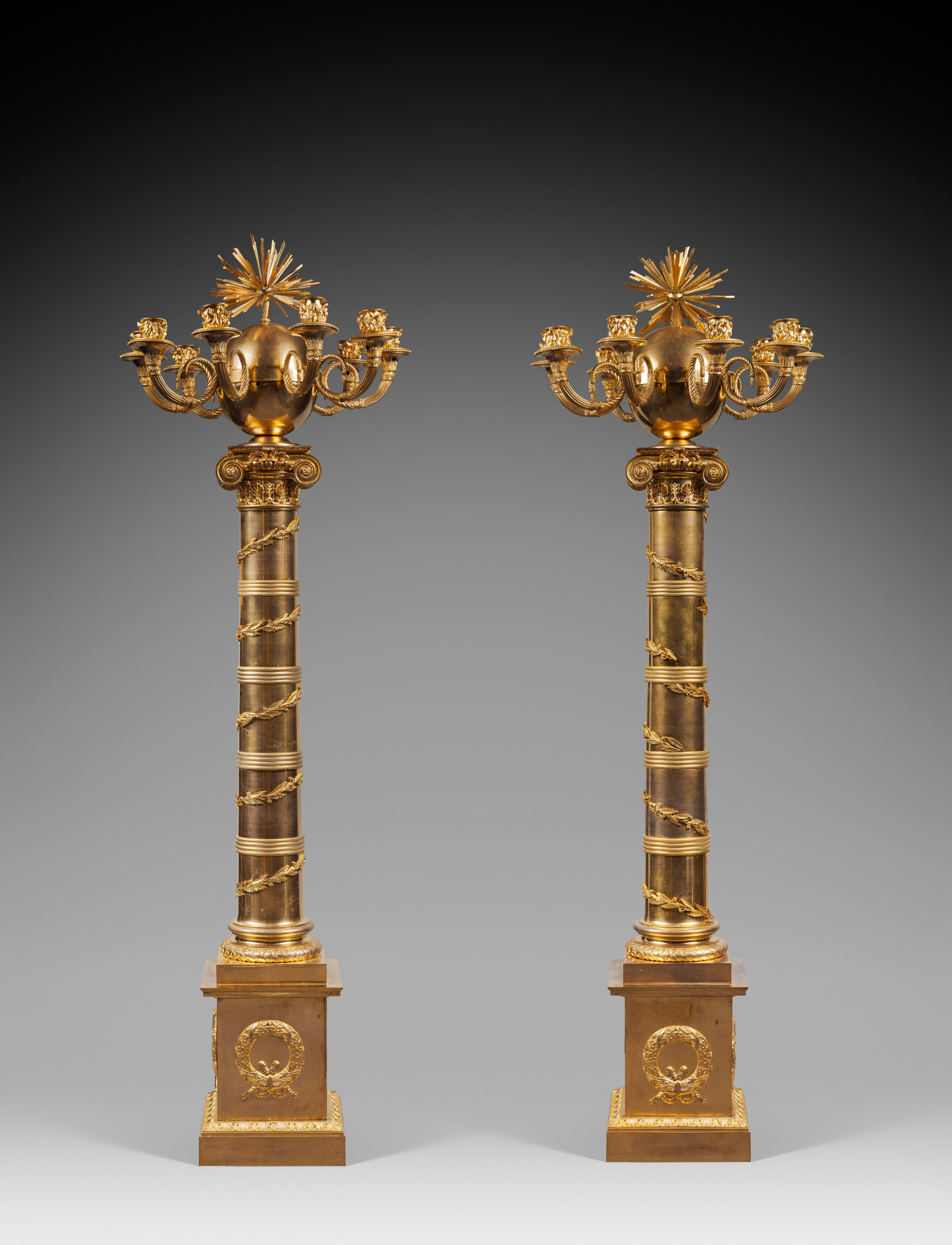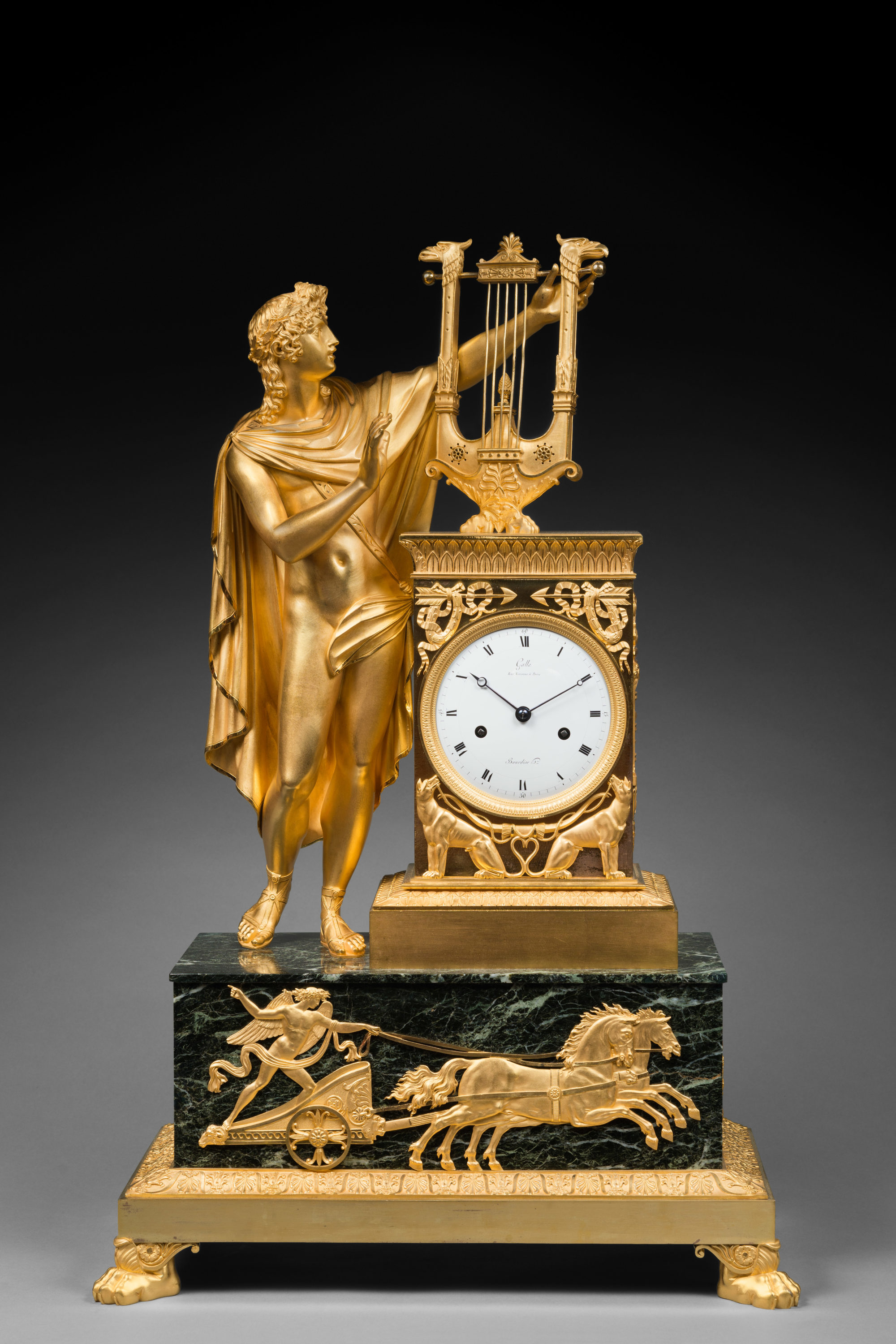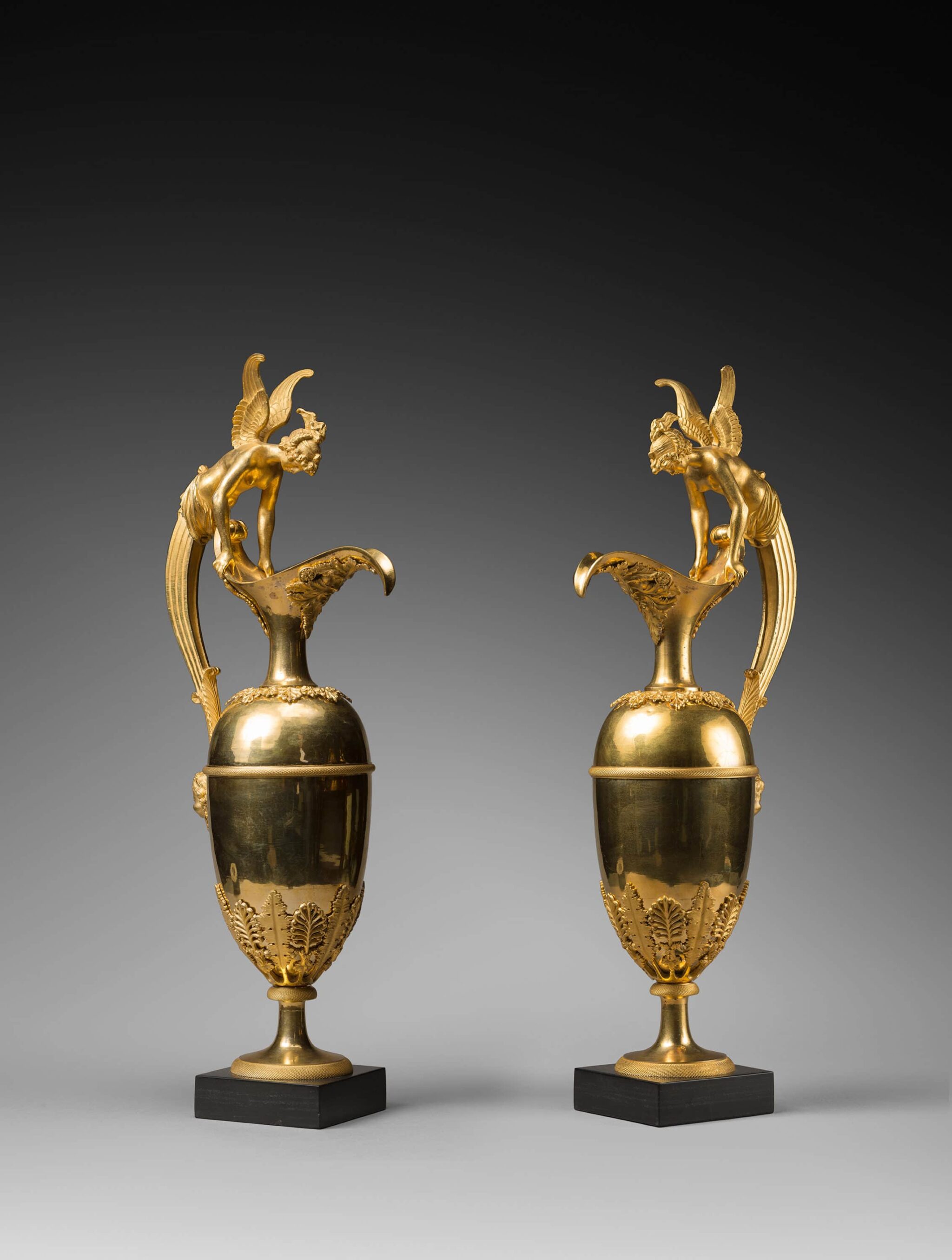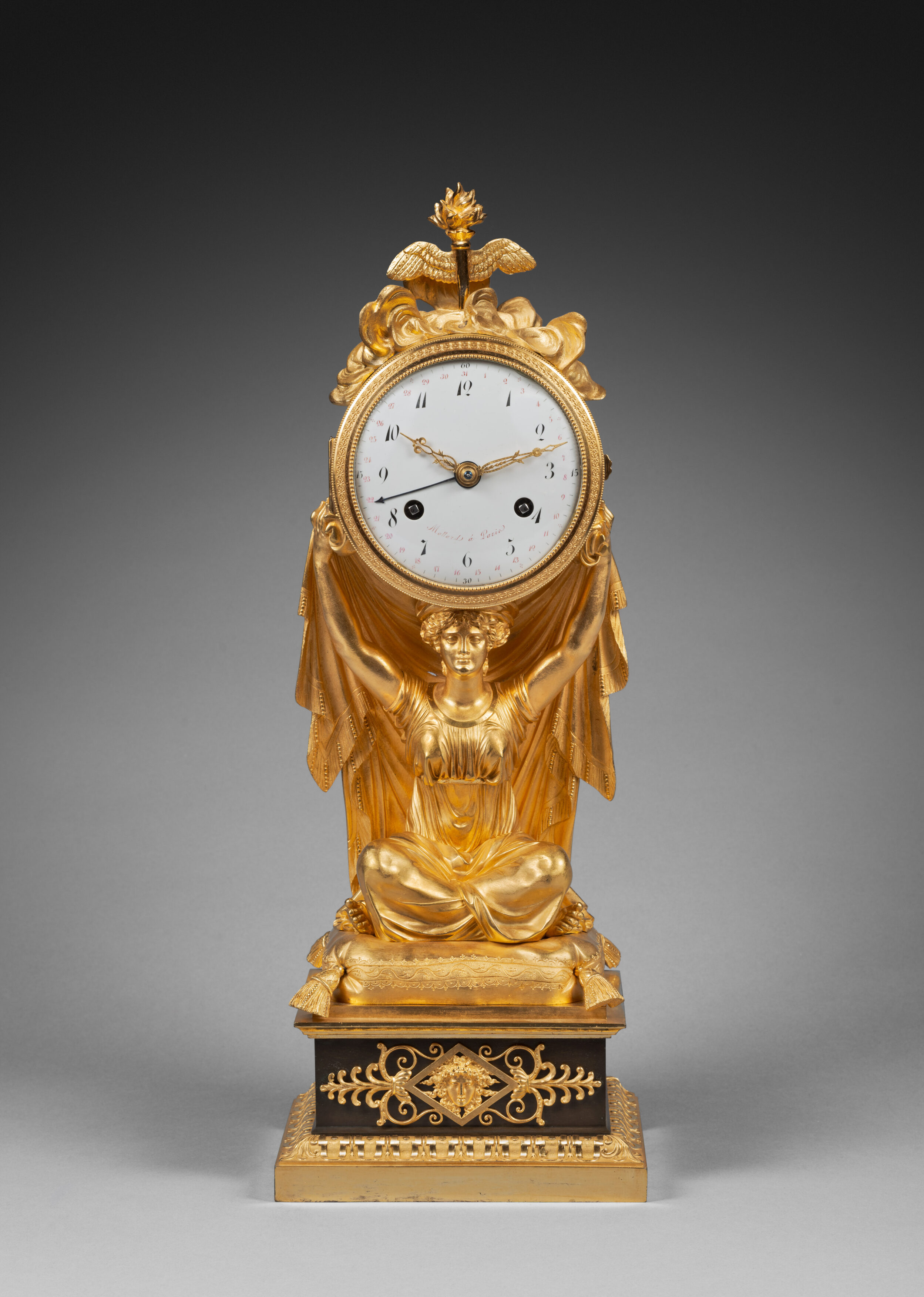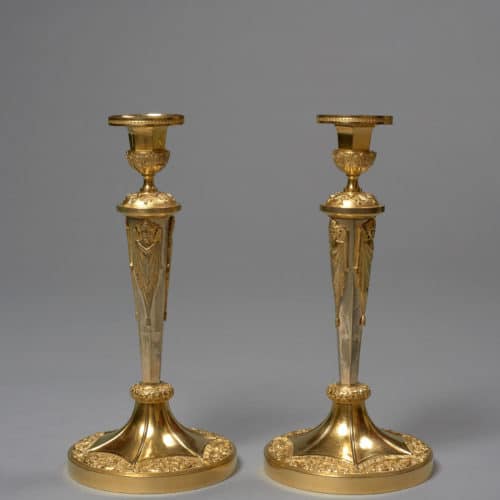Pair of Gilt Bronze Candlesticks
“Genies’ Heads“
This pair of finely chased gilt bronze candlesticks, with tapering six-sided stems, is embellished with three winged and draped classical figures; the hexagonal nozzles are adorned with stylised leaf motifs and the drip pans with palmette friezes. The stems and the base are separated by a wide flower wreath. Spreading fan-shaped segments and scrolling flower and leaf motifs adorn the bases.
This pair of candlesticks may confidently be attributed to the bronzier Claude Galle, who delivered three pairs of identical candlesticks to the Château of Fontainebleau: two pairs in 1804 and the third in 1805. In 1807, one pair is mentioned as being in Napoléon’s second salon, while the two others were in the Empress’s salon. In 1871 and 1898, two of these three pairs left the Mobilier national; their whereabouts are not known today. One last pair is still in the collection of the Château de Fontainebleau (illustrated in Marie-France Dupuy-Baylet, L’Heure, le Feu, la Lumière: Les bronzes du Mobilier national 1800-1870, Editions Faton, Dijon, 2010, p. 82, catalogue n° 33).
Claude Galle (1759 - 1815)
One of the foremost bronziers and fondeur-ciseleurs of the late Louis XVI and Empire periods, Claude Galle was born at Villepreux near Versailles. He served his apprenticeship in Paris under the fondeur Pierre Foy, and in 1784 married Foy’s daughter. In 1786 he became a maitre-fondeur. After the death of his father-in-law in 1788, Galle took over his workshop, soon turning it into one the finest, and employing approximately 400 craftsmen. Galle moved to Quai de la Monnaie (later Quai de l’Unité), and then in 1805 to 60 Rue Vivienne.
The Garde-Meuble de la Couronne, under the direction of sculptor Jean Hauré from 1786-88, entrusted him with many commissions. Galle collaborated with many excellent artisans, including Pierre-Philippe Thomire, and furnished the majority of the furnishing bronzes for the Château de Fontainebleau during the Empire. He received many other Imperial commissions, among them light fittings, figural clock cases, and vases for the palaces of Saint-Cloud, the Trianons, the Tuileries, Compiègne, and Rambouillet. He supplied several Italian palaces, such as Monte Cavallo, Rome and Stupinigi near Turin.
In spite of his success, and due in part to his generous and lavish lifestyle, as well as to the failure of certain of his clients (such as the Prince Joseph Bonaparte) to pay what they owed, Galle often found himself in financial difficulty. Galle’s business was continued by his son after his death by his son, Gérard-Jean Galle (1788-1846). Today his work may be found in the world’s most important museums and collections, those mentioned above, as well as the Musée National du Château de Malmaison, the Musée Marmottan in Paris, the Museo de Reloges at Jerez de la Frontera, the Residenz in Munich, and the Victoria and Albert Museum in London.
Discover our entire collection of rare clocks on La Pendulerie Paris.
